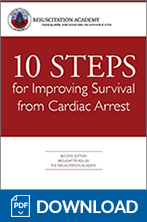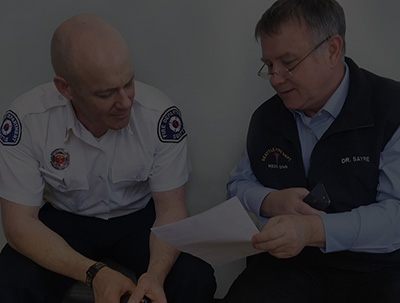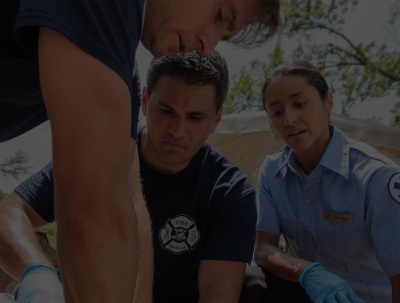10 Steps
Benchmarking Communities Who Are Improving Cardiac Arrest Survival
A public health crisis
Out-of-hospital cardiac arrest is a sudden and dramatic medical emergency. 950 people are effected each day.
Without warning, the victim’s heart stops pumping and there is a loss of consciousness. A stopwatch starts at the moment of collapse. Within just 10 minutes, the probability for survival is greatly decreased if resuscitation efforts are not initiated.
Speed and quality are the low-hanging fruit for improving survival
Many communities around the nation and world have demonstrated a successful approach to continuously improving survival from cardiac arrest. Their plan consists of 10 specific steps as outlined by the Resuscitation Academy’s book 10 Steps for Improving Survival from Cardiac Arrest.
Steps 1 – 4 are considered foundational because of their ability to measure system effectiveness and improve the quality of the first 10 minutes (600 seconds) of a cardiac arrest incident.

Exemplar Communities
When implemented and adapted locally, the 10-Steps optimize a community’s Chain of Survival. When each link in the Chain is strengthen, conditions for improved survival are improved. According to the academic template used to measure cardiac arrest survival (Utstein template), the number of these patients who survive to hospital discharge determines a community’s cardiac arrest save rate.
Learn more about how to increase survival from cardiac arrest in your community.













